Transferring a tattoo sketch onto skin
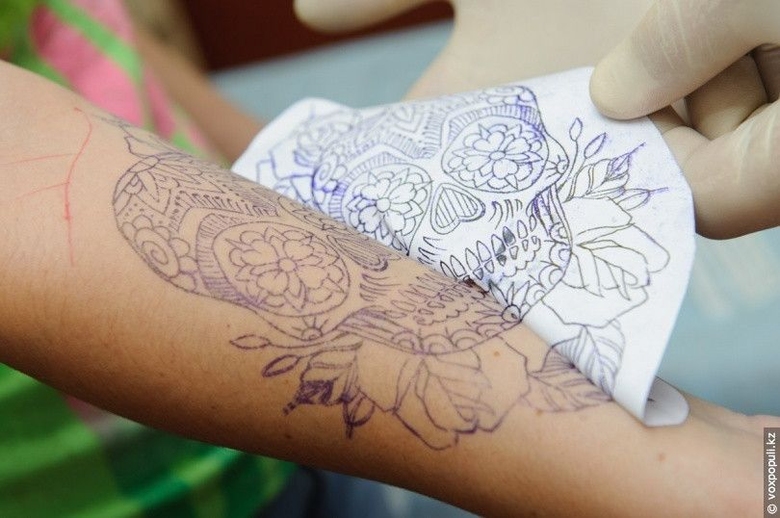
Transferring an image onto the skin is one of the most important stages in the process of creating a tattoo. The accuracy of the transferred image largely determines the quality of the final work. This applies not only to styles that require geometric precision, such as ornamental, but even to realistic tattoos, where the artist needs to mark all areas of color transitions and the placement of important details.
However, it is not just about transferring the image onto the skin, but also keeping it readable throughout the entire session. Nowadays, with the tattoo industry developing rapidly, there are enough professional tools available on the market for transferring images onto the skin without using old and "proven" homemade transfer methods, so we will not dwell on the achievements of folk crafts in this article.
So, the first question that arises for any novice tattoo artist is what tools and accessories are needed for tattoo transfer?
Here are two main methods.
Transferring a design onto the skin using special transfer paper (manual and machine transfer - more on that later);
Freehand - or drawing the future tattoo design directly on the client's skin;
Before we talk about the processes themselves, let's clarify the basic concepts.
What is transfer paper?
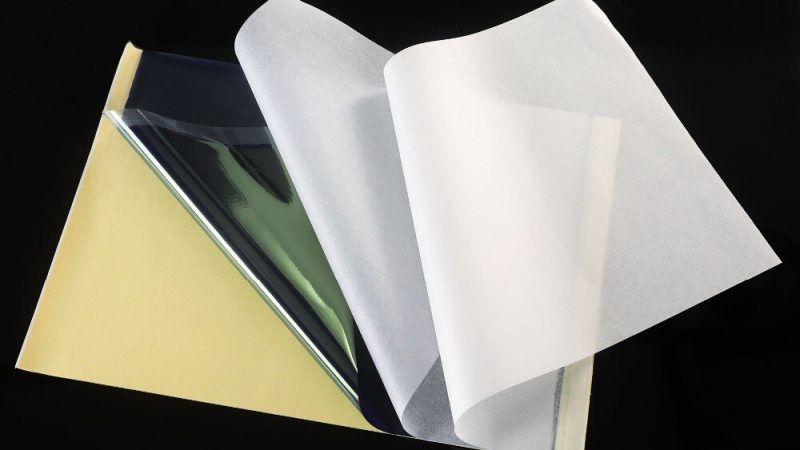
There are currently two types: for manual and machine transfer.
Manual transfer paper is nothing other than a familiar "copy paper" that many of us know from childhood. It has two layers. You trace over the top layer with slight pressure, and a copy of the image is transferred onto the bottom layer. It's extremely simple, and it's almost impossible to get confused about it.
Machine transfer paper is a special paper for a thermal printer, onto which an image is printed directly from a computer. You can even use a regular inkjet printer with special inks. There's no need to trace by hand, but you have to pay for the convenience. These printers are quite expensive to maintain. This option is suitable for artists who draw designs on graphic tablets and computers. Two clicks, and the transfer is ready.
Why do you need transfer gel for tattoos?
Old-timers may say that they used to transfer tattoos with Dettol even before any of us were born, but now we have electric light. So let's allow progress to improve and make our lives easier.
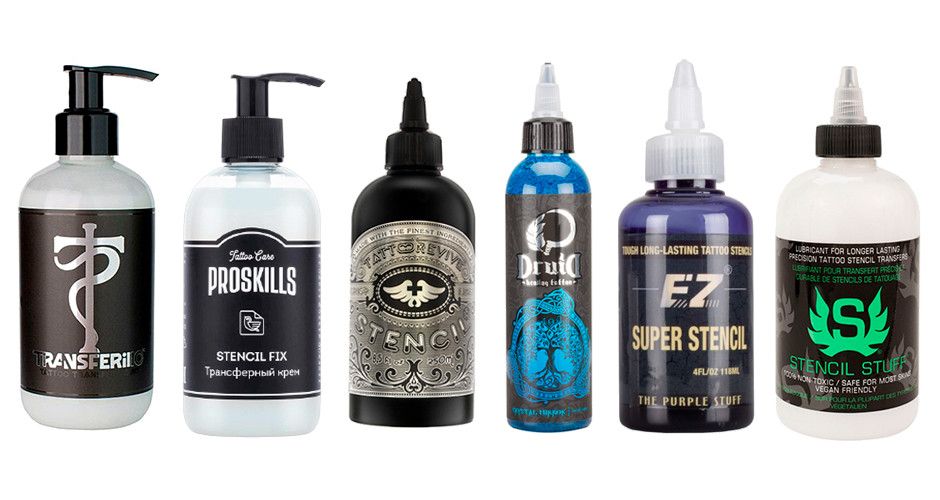
Transfer gel is one of the achievements of modern tattoo industry. It allows for the most precise transfer of the design onto the skin. It's easy to apply, even the smallest details of the image are accurately transferred, it's long-lasting, which means that the transfer won't smudge during the work. Isn't that what you wanted?
The gel for transferring the design is harmless to humans, hypoallergenic, doesn't dry out the skin, and preserves the transferred image intact throughout the entire session, even despite the use of petroleum jelly, oil, or soap concentrate during the tattoo application.
How to transfer a sketch onto skin?
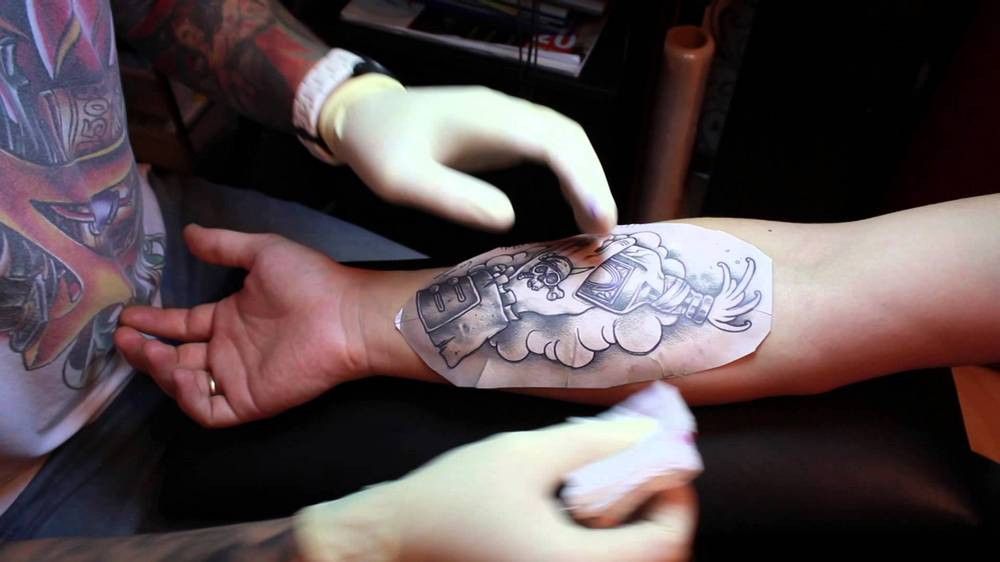
The process of transferring an image onto skin is not that difficult, but some details are best discussed in advance.
If you are using machine translation, simply skip this section and move on to the second step.
If you are using the manual method of transferring the image, you need to first make a transfer print of your sketch on transfer paper. It sounds a bit scary, but in reality, it's not that difficult. You need to take your sketch, place transfer paper under it, fix the sheets together with staples to avoid shifting of the image during the transfer process, and lightly trace all the necessary details and contours. It's convenient to use a paper tablet as a flat surface.
After the transfer is ready for transfer, a preliminary fitting is necessary to take into account the geometry and anatomical curves of the body, make incisions on the transfer so that it fits tightly to the skin at the planned tattooing site, and the image does not warp.
The second step is preparing the skin. The tattooing area should be cleaned of contaminants with antibacterial agents, hair should be removed with a disposable razor, and the surface should be degreased.
This primarily ensures the client's safety from pathogenic bacteria penetrating the upper layers of the skin together with the tattoo, as well as creating the correct basis for the transfer.
Next, apply a thin layer of transfer gel. There shouldn't be too much gel, but not catastrophically little either. It's important that the gel covers the entire transfer surface.
Now comes the most important moment of transferring the sketch onto the skin. Carefully apply the prepared transfer to the place with the applied gel and press it from all sides, avoiding movement of the sheet over the skin.
After the entire transfer is distributed on the skin, it is necessary to wait at least 30 seconds for the pattern to be printed on the skin (the exact time depends on the transfer gel used - see the packaging and instructions for use).
After that, carefully remove the paper from the skin, also avoiding movement of the sheet over the skin, as the transfer has not yet dried and each extra movement can distort the transfer.
Be sure to check if everything is okay with the transferred image. If you see minor flaws, be sure to try to fix them as soon as possible before the transfer dries and sets.
If everything is in order, wait for the transfer to dry, and then you can start working.
If there are too many flaws, erase the transfer and repeat the procedure from the beginning. To remove the transferred pattern, you can use a cotton swab dipped in alcohol.
How to transfer a tattoo sketch onto skin without special tools?

This method is only suitable for experienced artists who work in the freehand technique, where the image is not actually transferred, but applied directly to the client's skin using a transfer marker. The composition of such a marker allows for a durable drawing on the skin, which also will not wash off during the session, as in the case with transfer paper.


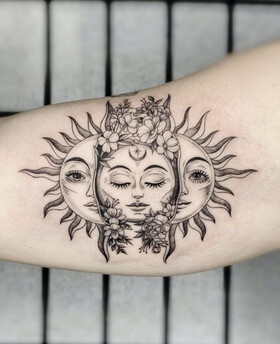

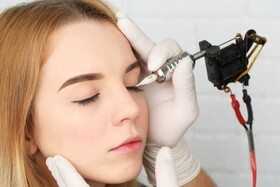
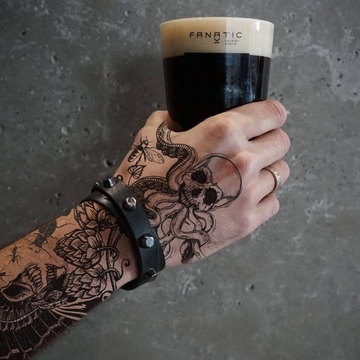
Comments (0)